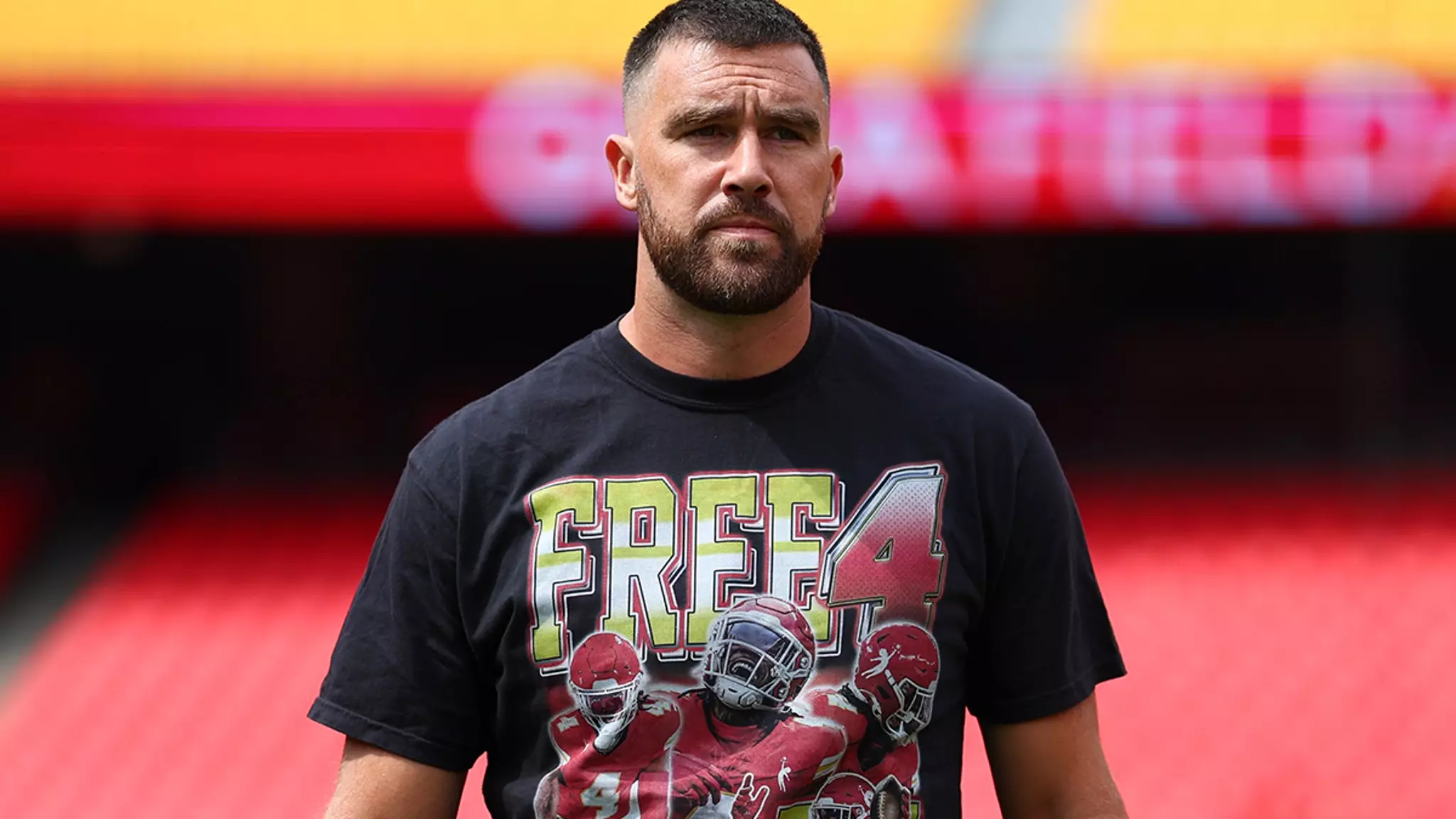In the high-stakes world of professional sports, athletes often use their platform to communicate powerful messages—whether intentionally or subconsciously. Recently, Travis Kelce’s choice to wear a T-shirt supporting Rashee Rice, who is currently serving a suspension related to a serious traffic incident, has ignited controversy. At face value, such gestures seem to promote team unity or express personal loyalty, but a closer examination reveals a deeper cultural and moral complexity. Are athletes merely showing camaraderie, or are they unwittingly endorsing problematic behavior?
Kelce’s decision to don a shirt with “Free 4” emblazoned across the chest seemingly symbolizes support for Rice’s return to the game. However, critics argue it goes beyond simple team spirit, sending a message that trivializes or even santifies reckless and criminal actions. When supporters wear symbols or slogans linked to controversial figures or incidents, they implicitly endorse the values or behavior associated with those symbols. Kelce, perhaps, unintentionally amplifies Rice’s controversial stance by elevating his image—potentially influencing public perception and impressionable fans.
This act of solidarity raises questions about the responsibility athletes hold in shaping societal norms. Is it appropriate for professional players, who serve as role models, to participate in such acts without considering the broader implications? Some may believe that sports are only about competition, and personal gestures are harmless; others see this as an opportunity for athletes to use their visibility for positive messaging. Kelce’s gesture walks a fine line—supporting a teammate’s comeback while risking the normalization of behavior that led to serious legal consequences.
The Morality of Celebrating or Supporting Controversial Figures
The controversy deepens when considering the nature of Rashee Rice’s incident. The details reveal egregious reckless behavior: speeding at over 100 MPH, fleeing the scene, and possessing illegal substances and weapons—all under a crash that injured others. Such actions are not minor infractions; they are serious offenses that resulted in financial judgments and legal penalties. Supporting someone involved in these acts questions the moral compass of those allies who choose to wear symbolic clothing in their honor, especially when their support seems superficial or unexamined.
Supporters argue that their gestures are simply about loyalty and camaraderie, but critics contend they reflect a dangerous disregard for accountability and responsibility. Kelce’s actions could be interpreted as an attempt to shield or normalize the individual rather than confront the gravity of his misconduct. Sports figures, with their platform, have the power to influence public sentiment—yet making light of a criminal act risks endorsing a reckless mindset that perpetuates harm and trivializes justice.
Moreover, the lawyer representing one of the injured parties pointedly critiques the support shown to Rice, emphasizing that action speaks louder than words. The suggestion that supporting a teammate means quietly forgiving or excusing their wrongdoings undermines the integrity of moral responsibility. If athletes truly support their teammates, perhaps they should also advocate for accountability—whether through financial restitution or public acknowledgment of the seriousness of their actions—rather than using apparel as a form of protest or support.
Role Models or Reckless Celebrity? The Responsibility of Public Figures
The tension between personal loyalty and moral responsibility becomes even more pronounced given the influence of athletes like Kelce and Thornton. Their gestures, whether intended as lighthearted or supportive, attract media attention and influence millions of fans. When these actions are perceived as dismissive of serious legal and ethical violations, they risk promoting a culture where accountability is secondary to camaraderie.
Some may argue that the coach and team leadership, like Andy Reid, prefer to focus on team chemistry and player support rather than individual controversies. However, this stance might overlook the message such actions send beyond the locker room. Supporting a teammate through apparel or public displays can communicate approval of behaviors that society has deemed unacceptable—speeding, fleeing the scene, and endangering lives.
Critical reflection necessitates that athletes consider the wider societal impact of their actions. Wearing a “Free 4” shirt, while seemingly trivial, can be interpreted as sympathy for someone who flouted the law and caused harm. It raises the question: should sports figures use their influence to advocate for reform and accountability, or continue to obscure the severity of such actions with symbolic gestures? Ultimately, the choice sends a powerful message—either as champions of justice or as figures risking the normalization of reckless behaviors.
This controversy underscores the importance of integrity in sports. Athletes wield enormous influence, and their actions—beyond just their performance on the field—shape cultural standards. Supporting individuals involved in criminal acts, especially without acknowledgment of the harm caused, can diminish the moral authority of sports figures. For truly impactful leadership, they should aim to promote accountability, justice, and responsible role modeling, instead of hiding behind slogans and shirts. That is the kind of legacy that can inspire future generations to value integrity over camaraderie at any cost.

